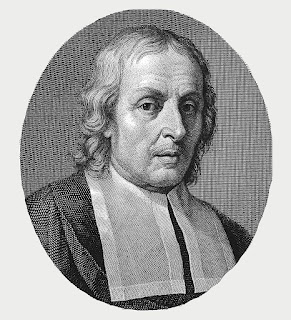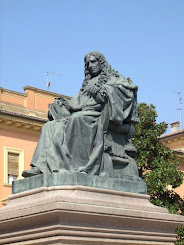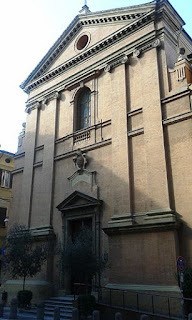NEW - Marcello Malpighi – scientist
Controversial doctor furthered the use of the microscope
Marcello Malpighi, who founded the science of microscopic anatomy, was born on this day in 1628 in Crevalcore, a town near Bologna in Emilia-Romagna. Malpighi became a physician and biologist who developed experimental methods for studying human anatomy. As a result of his work, microscopic anatomy became a prerequisite for advances in the fields of physiology, embryology and practical medicine. In 1646, at the age of 18, Malpighi went to study at Bologna University. Although both of his parents died when he was 21, he was fortunately able to continue with his studies. He was granted doctorates in both medicine and philosophy in 1653 and appointed as a teacher by the university, despite not having been born in Bologna. He immediately set out to continue with his studies of anatomy and medicine. In 1656, Ferdinand II of Tuscany invited Malpighi to be professor of theoretical medicine at the University of Pisa. After moving to Pisa, he developed what was to be a lifelong friendship with the mathematician and naturalist Giovanni Borelli. Read more…
______________________________________
Corrado Parnucci – architectural sculptor
Prolific artist whose work adorns cities of Michigan
The architectural sculptor Corrado Giuseppe Parnucci, who left his artistic mark on more than 600 buildings in Detroit and other cities in the US state of Michigan, was born on this day in 1900 in Buti, a Tuscan village about 15km (9 miles) east of Pisa. Taken to live in America at the age of four, Parnucci – generally known as Joe – settled in Detroit after accepting some work there in 1924. Among the Detroit landmarks with architectural embellishments by Parnucci are the Buhl Building, The Players, the Guardian Building, the David Stott Building, the Detroit Masonic Temple, the Detroit Historical Museum and the Wilson Theater. Most of those buildings went up during the 1920s as the city’s skyline underwent huge change. Parnucci also sculpted work for buildings in most other major Michigan cities, including Grand Rapids, Ann Arbor and Flint, and accepted numerous commissions from private individuals. One of his masterpieces is the moulded plaster ceiling in the dining room of Meadowbrook Hall, the Tudor revival mansion built for Matilda Dodge, ex-wife of Dodge Motors co-founder John F Dodge. Read more…
____________________________________
Giuseppe Mazzini - hero of the Risorgimento
Revolutionary was ideological inspiration for Italian unification
Giuseppe Mazzini, the journalist and revolutionary who was one of the driving forces behind the Risorgimento, the political and social movement aimed at unifying Italy in the 19th century, died on this day in 1872 in Pisa. Mazzini is considered to be one of the heroes of the Risorgimento, whose memory is preserved in the names of streets and squares all over Italy. Where Giuseppe Garibaldi was the conquering soldier, Vittorio Emanuele the unifying king and Camillo Benso, Count of Cavour the statesman who would become Italy's first prime minister, Mazzini is perhaps best described as the movement's ideological inspiration. Born in 1807, the son of a university professor in Genoa, Mazzini spent large parts of his life in exile and some of it in prison. His mission was to free Italy of oppressive foreign powers, to which end he organised numerous uprisings that were invariably crushed. At the time of his death he considered himself to have failed, because the unified Italy was not the democratic republic he had envisaged, but a monarchy. Yet an estimated 100,000 people turned out for his funeral in Genoa. Read more…
___________________________________
Lorenzo Da Ponte - writer and impresario
Colourful life of Mozart's librettist
The librettist Lorenzo Da Ponte, who could be described on two counts as a figure of considerable significance in the story of opera, was born on this day in 1749 in Ceneda - since renamed Vittorio Veneto - about 42km (26 miles) north of Treviso in the Veneto region. Da Ponte wrote the words for 28 operas by 11 composers, including three of Mozart's greatest successes, Don Giovanni, The Marriage of Figaro and Così fan tutte. He also opened New York City's first opera house in 1833 at the age of 84 and is credited with introducing the United States both to Mozart and Gioachino Rossini. Da Ponte was born Emanuele Conegliano at a time when Ceneda was a strongly Jewish community. His mother, Rachele, died when he was only five and at the age of 14 he was baptised as a Catholic along with his father, who wanted to marry a Catholic girl but could do so only if he converted. In accordance with tradition, Emanuele took the name of the priest who baptised him, in his case the Bishop of Ceneda, Lorenzo Da Ponte. Through the Bishop's influence, Emanuele and his two brothers were enrolled in the seminary of Ceneda and Lorenzo was ultimately ordained as a priest. Read more…
Booking.com















